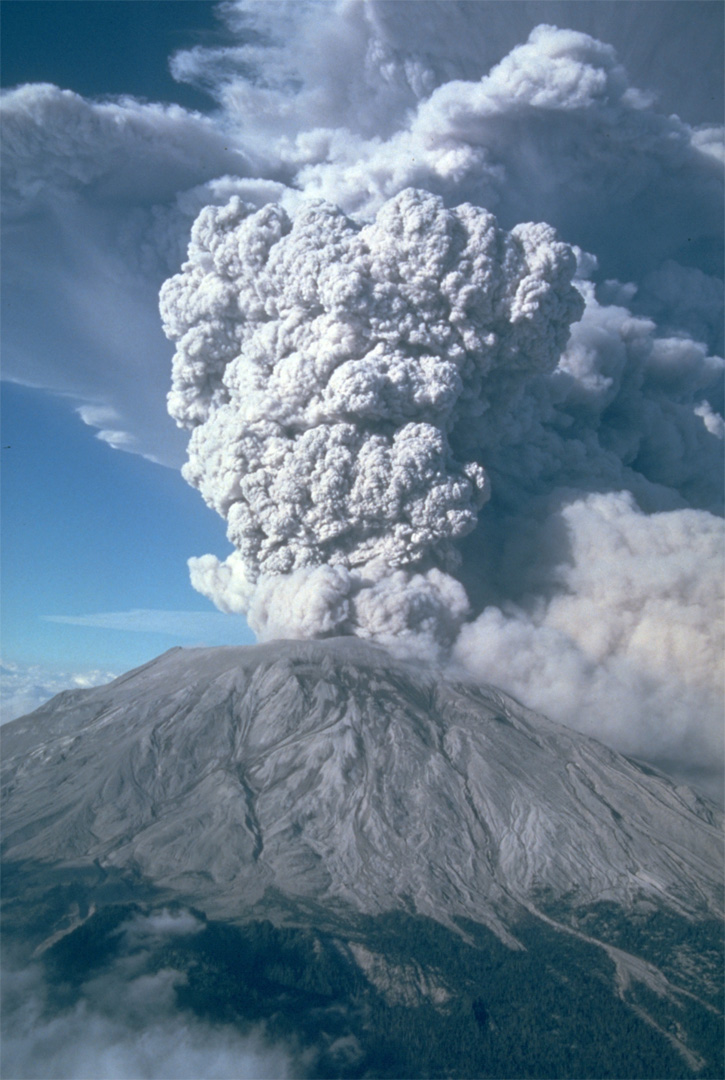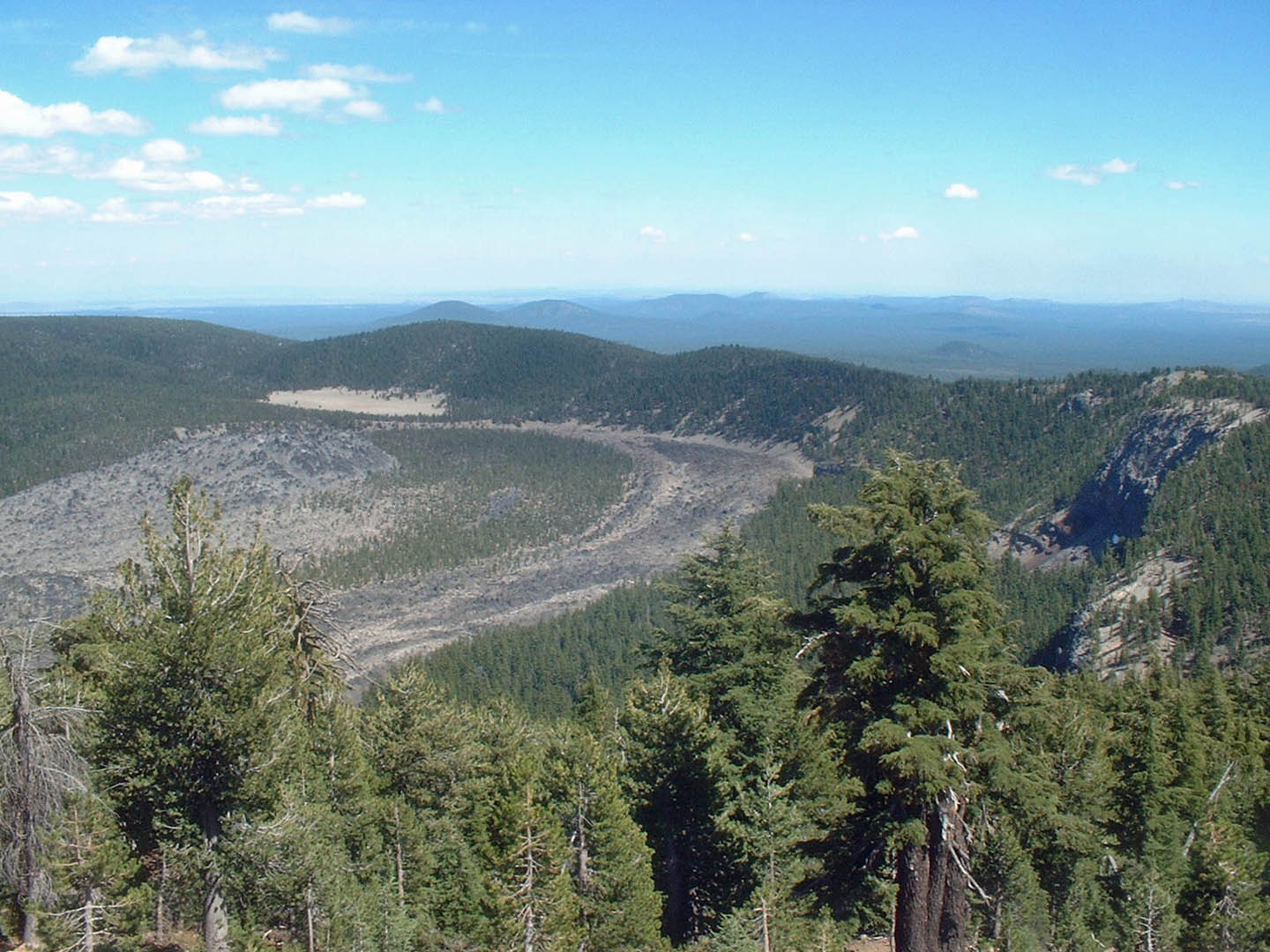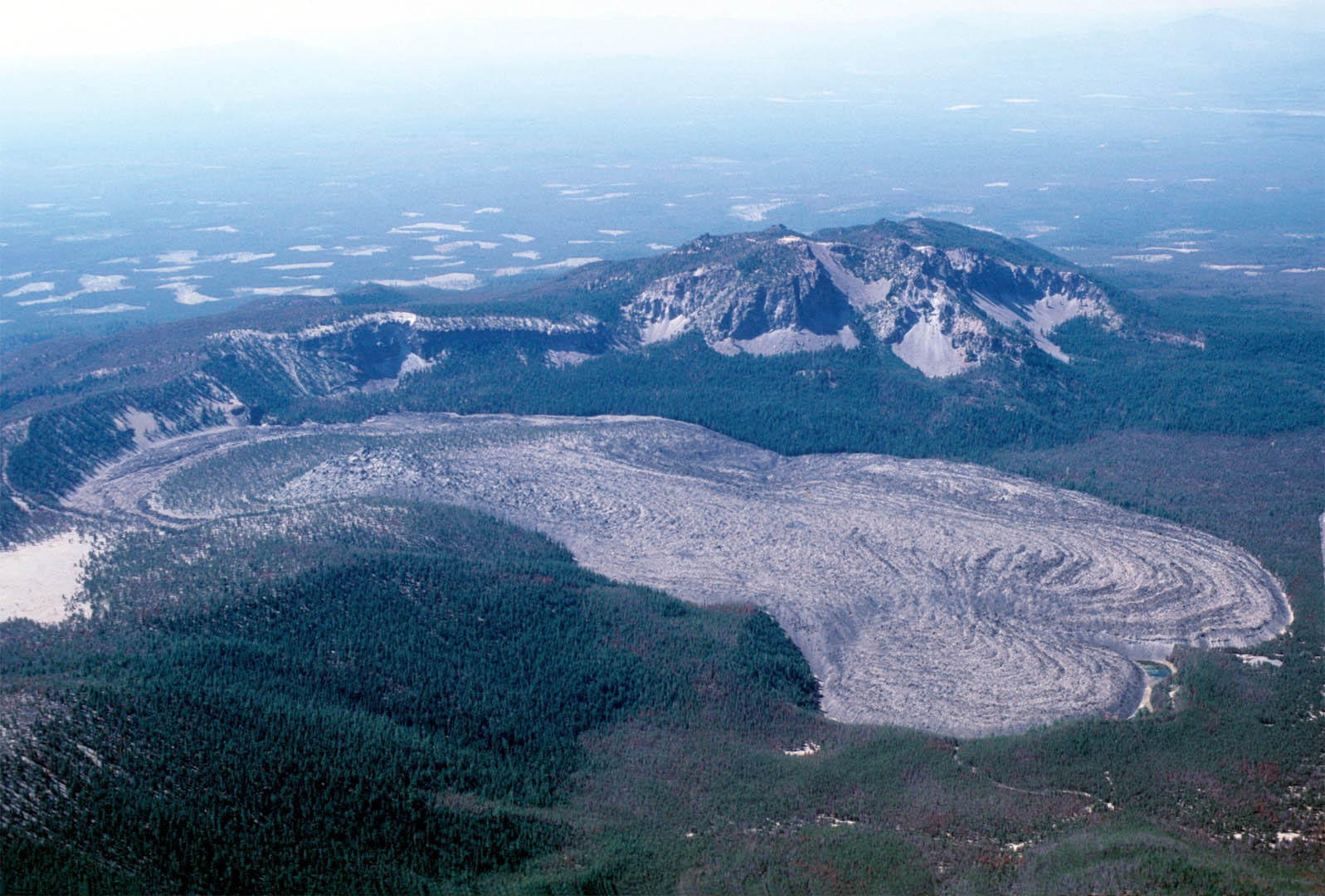Felsic lava is lava that it is highly viscous; it is very “thick” and does not flow easily. Felsic lava also has a very high gas content. When pressure is released, the high gas content (typically water vapor and carbon dioxide) results in a violent explosion. This is what happened in the 1980 eruption of Mt. St. Helens in Washington state (see graphic to the right). This violent explosion resulting from a release of pressure is very similar to the foaming that can occur in a carbonated soft drink when the container is opened and the pressure is released. Felsic lava is common in continental crust, and is high in silica content. Lassen Peak in northern California is a typical example of a mountain formed by felsic lava. Granite is an example of a common rock formed by felsic lava.
Measuring the Big Obsidian Flow
Newberry Volcano in Oregon has been the site of thousands of eruptions beginning over 600,000 years ago.
- Click here to see Newberry Volcano.
The most recent eruption occurred 1,300 years ago. This eruption produced a large flow of felsic lava over 20 m (66 ft) thick that is known as the Big Obsidian Flow.
- Click here to zoom in on the Big Obsidian Flow.
- Use the polygon measuring tool located on the toolbar to determine the surface area covered by the Big Obsidian Flow. (Click here if you need a hint on the kind of polygon shape required. The greater the number of control points that you use, the more accurate your surface area will be!)
- What surface area does the Big Obsidian Flow cover?
The area of the polygon used in the hint has a surface area of 2.9 km2. The accuracy of your actual answer will depend on the number of control points that you used.
Size comparisons: The Pentagon, the headquarters of the United States Department of Defence, in Virginia is the world’s largest office building by floor area.
- Click here to zoom in on the Pentagon.
- Use the polygon tool to measure the surface area covered by the Pentagon (including the inner courtyard.)
- What surface area does the pentagon cover?
The surface area of the Pentagon is approximately 0.1 km2. Answers will vary slightly depending on the accuracy of your measurement. - Use your answers for questions 2 and 3 to calculate how many Pentagon buildings it would take to cover the Big Obsidian Flow. The number of Pentagon buildings required to cover the Big Obsidian Flow is approximately 29. (area of Big Obsidian Flow / area of Pentagon = 2.9 km2 / 0.1 km2 = 29)


